
TECH TALK TUESDAY - Can emerging concussion-detection technology benefit motorcyclists?
Even with the best helmet, a spill on a motorcycle can lead to a concussion. Would you be able to recognize the signs of a concussion? In the not-so-distant-future, your helmet may be able to detect it for you.
By Jen Dunstan Courtesy Revzilla
There's plenty of evidence that concussions are underreported in sports. A survey of college football players by Harvard and Boston University researchers estimated that more than 80% of concussions aren’t reported or diagnosed. Findings like these, along with high-profile cases of athletes who suffered permanent neurological damage from repeated impacts, have sparked a flurry of research and new advancements in preventing head injuries in sports. Motorcyclists may benefit from these discoveries.

In an effort to reduce concussions, the NFL and CFL have mandated the use of Guardian Cap helmet covers in practice and pre-season training. Guardian has reported a more than 50% reduction in concussions compared to the previous three-year averages. Guardian Cap photo.
The current state of head injury prevention and detection in motorcycling
To get a big-picture idea of the when, where, and how motorcycle helmets were invented, check out this piece that includes a lot of that history. In more recent times, we have reported on advancements in helmet technology in regard to MIPS and in general.
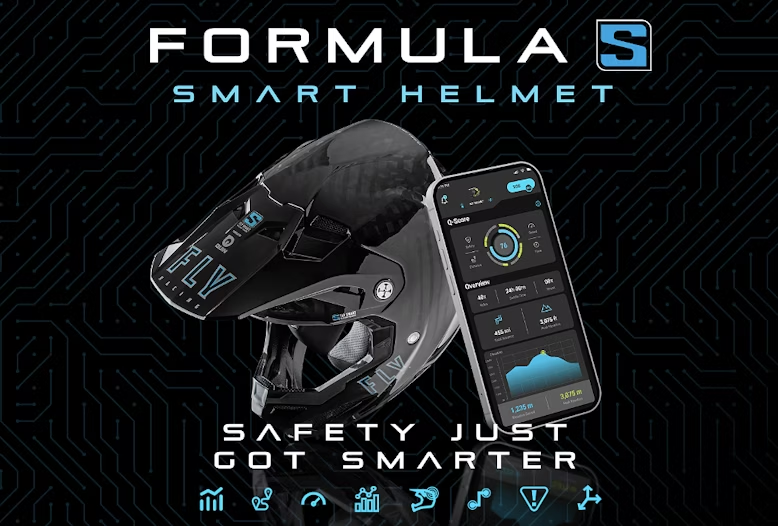
Fly Racing has teamed up with Quin to bring cutting-edge analytics technology to the off-road helmet segment. Fly Racing illustration.
This past summer, Fly Racing announced its 2024 Formula “S” helmet utilizing Quin technology for impact detection and SOS services. This smart helmet does have a lot of notable tech features that riders will find convenient and enjoyable, such as Bluetooth capabilities and ride-mapping analytics. But what really stands out about the lid is the auto SOS alert and data recording if the helmet detects a crash.
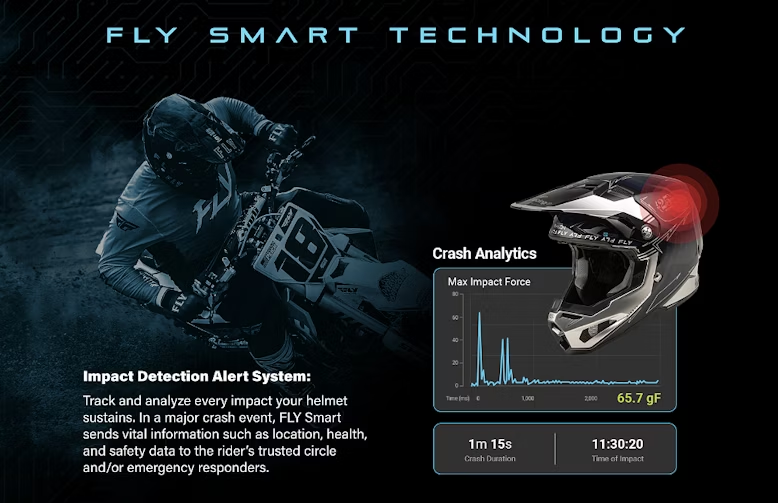
According to this graphic on Fly Racing’s website, the Formula S helmet is capable of recording data such as G forces on impact, duration of impact, and time of impact. This data is available only if riders opt in to the yearly $76 “Apex membership.” Fly Racing illustration.
Quin’s website doesn’t divulge much about its proprietary technology, called the “Intelliquin Smart System,” but the animation seems to indicate that the Bluetooth system has some added sensors. The system can register the impact of a crash and automatically alert SOS contacts and 911 emergency services. It will also record data about the crash that may be useful to medical professionals during diagnosis and treatment. Quin and Fly Racing are careful not to use the term “concussion detection” but rather “impact detection.” Diagnosing a concussion is still a difficult task, even for trained medical professionals. Many factors, such as bone thickness, past history of head injury, hydration, variables of the recent head trauma, and more can come into play. Technology like Quin's can provide information about the impact that can help with the diagnosis of a potential concussion.
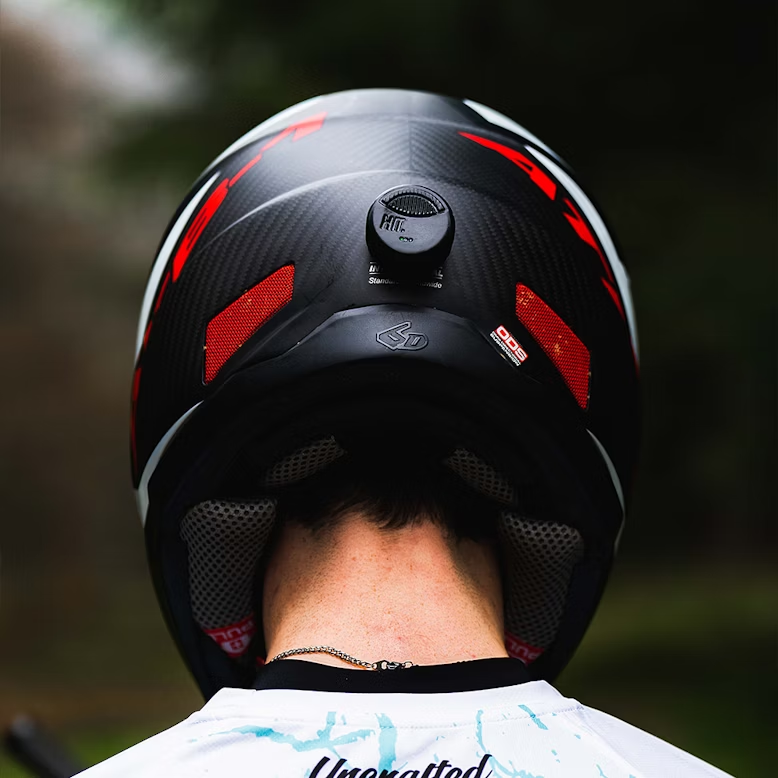
The HIT+ device attached to a 6D helmet for downhill mountain biking. HIT photo.
Another device delivering impact analytics is the HIT device from the UK. The upside of this unit is that the rider can attach it to an existing helmet. HIT has not shown the device in motorcycle applications yet, but the downhill mountain bike helmets they are attached to aren’t far off from a motocross helmet. HIT is more forthright about its desire to detect concussions, but also includes caveats.

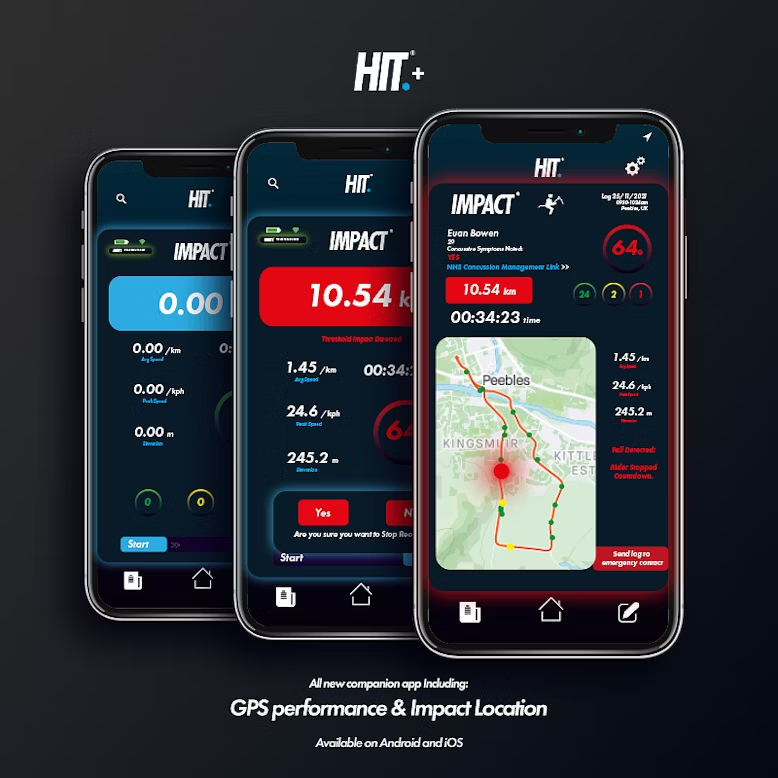
The HIT+ device records data about an impact, including when and where. The user sets the G-force thresholds the device uses to apply a green, yellow, or red designation. HIT illustration.
For instance, the rider must select their own threshold for G forces that the device and app will use to grade impacts. HIT also warns users on their site that “HIT recognises the force of impact allowing the user to act on but cannot detect or diagnose a concussion. This should be done by a medical professional only.” The data recorded by the HIT+ can be useful, but it is ultimately up to the rider to seek medical help to interpret that data and make a recovery plan, if necessary.
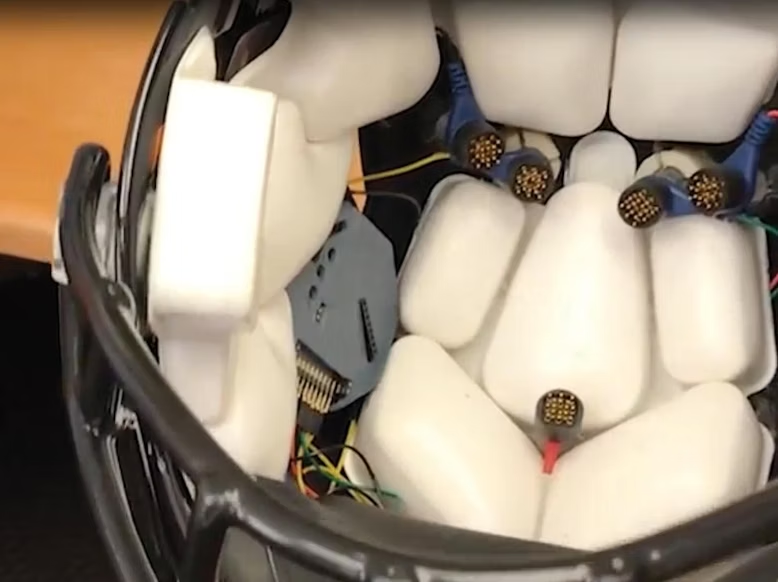
An early prototype outfitted with electroencephalography (EEG) sensors to read brain activity of football players. NoMo Diagnostics photo.
Emergent concussion detection technology
In the realm of traditional sports, many universities and start-ups are exploring more advanced tools for data collection and diagnosing protocols. CBS News reports that professors at Columbia University are developing a device that can detect concussions and brain injury in real time.
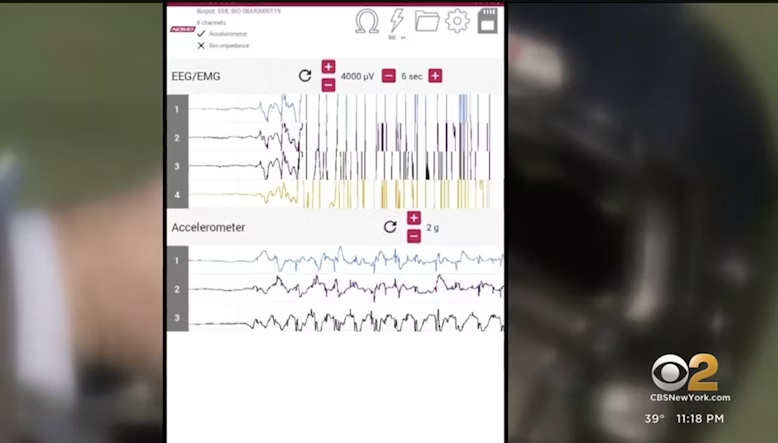
The NoMo Diagnostics software reads brain activity in real time as a CBS News reporter wears the helmet and mimics and impact event. Image from CBS News video.
Researchers have retrofitted electroencephalography (EEG) sensors into football helmets, and those sensors record brain activity and impact data that is readable from the sidelines instantaneously through an app. This way coaches or medical personnel can make the call to pull a player from the field if they see red flag warnings of a concussion in the data. The technology looks promising but it appears to be still in the theory stage as the NoMo Diagnostics website is under construction.
Not every concussion is the result of direct head impact, however. Whiplash is the culprit of many undiagnosed concussions, and because it doesn’t involve blunt trauma to the head many devices would not be able to register its real potential for brain injury. Smithsonian Magazine reported on an experimental patch that is said to measure the effects of whiplash.
“Unlike accelerometer-based current trends on concussion-detection systems, which rely on sensors integrated in the athlete’s helmet, the flexible patch attached to the neck would provide information on the dynamics of the head movement, thus eliminating the potential of false readings from helmet sliding or peak angular acceleration,” write the authors of the scientific report.
The thin strip of thermoplastic material is capable of producing an electrical signal triggered by strains to the neck. The severity of the acceleration and velocity from the whiplash is registered in the data and through analysis can help doctors better diagnose if a concussion was caused by the whiplash. So far, the wearable patch has only been reviewed on crash test dummies.
Concussion symptoms, diagnosis and care
Suffering a second concussion before recovering from the first one is one of the most dangerous scenarios, which is why detection and quick diagnosis are so important. HEADCHECK PRO is one all-in-one concussion testing, evaluation, and tracking app that streamlines the process for big athletic organizations. While this particular service is specific to professional sports teams, bridging the gap between data collection and diagnosis is something motorsports enthusiasts could benefit from, as well. With the rise of virtual teleconferencing with doctors, it doesn’t take much imagination to envision a future where riders can have their impact data sent directly to a remote doctor for a thumbs up or down to keep riding.
Ultimately, most medical professionals would prefer riders to be seen in person by a doctor after a head impact, due to the difficulty of diagnosing a concussion and the many variables involved. The CDC has resources to help spread awareness of concussion symptoms and treatment. If you suffer a head injury after a riding incident, the best bet is to seek medical attention right away to determine if you have a concussion or not and follow your doctor's orders on how to recover. There are no medical treatments for concussions, aside from bed rest and pain medicine, so early detection is crucial to allow the brain to recover and reduce the chances of long-term effects.
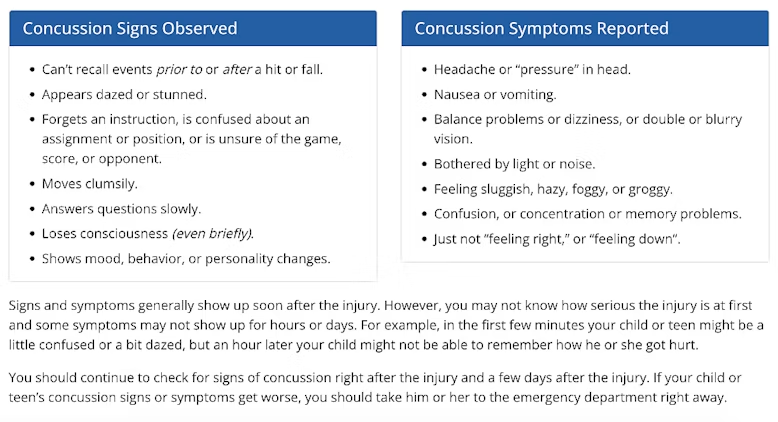

These are the CDC guidelines for detecting a possible concussion. CDC Illustration.
Science and medicine are still working on an all-encompassing solution to the problem of concussion detection. In the meantime, prevention and detection are key to reducing the chances of long-term effects from a concussion. Make sure your helmet fits correctly and explore technology like MIPs and safety standards such as ECE and SNELL to find a helmet that meets your needs. If in doubt, always seek medical help after a crash for diagnosis and treatment.
SOURCE: REVZILLA
Disclaimer:
As a service to the sport we all love and follow, Biker Life posts numerous media releases from a wide variety of sources on our website. Due to the large number, and sometimes short time available, it is nearly impossible to review each public release. These articles are written by reporters, writers or press officers who work for various organizations, event organizers, teams, drivers, riders, and other parties, and they do not necessarily reflect the opinions of Biker Life.